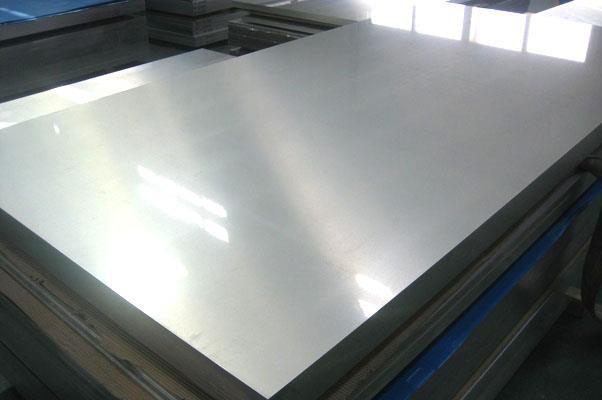The alloy you choose for your aluminum sheet naturally depends on your application. 5005 Aluminum sheet is often used when the material will be anodized and deployed in an architectural application like flashings, sills, curtain walls etc. Architects often specify 5005 alloy for anodized aluminum architectural metalwork.
The importance of using an anodizing quality (AQ) alloy when the aluminum will be anodized cannot be overstated. Anodizing is an electrochemical process that converts the metal surface into a decorative, durable, corrosion-resistant, anodic oxide finish. For more information about anodizing please see http://www.anodizing.org/?page=what_is_anodizing. When anodizing, the metal you start with has a tremendous impact on the quality of the finished product that you will receive. Simply stated 5005 AQ alloy is formulated for a decorative architectural anodized finish. It allows for a more uniform and attractive anodized finish than other alloys.
DO NOT attempt to anodize aluminum alloys like 3003 or 3105 if you want the finish to be attractive and consistent. These alloys will show imperfections such as structural streaks, cloudiness, blemishes, and EXTREME color variation.
Many people substitute 5052 for 5005. While 5052 can produce acceptable results, it has more imperfections and is more prone to color variation than 5005 alloy aluminum.
Flat material that is 1/4” is not technically sheet, it is plate. Plates are rarely used aesthetically and is normally used in structural applications. Because of this, plates are not manufactured for a perfect finish. If your application does not require good aesthetics, 5052 or 6061 alloys may be an acceptable substitute for 5005 aluminum.
Talk to your anodizer about your applications, and your expectations for the finish. They should be able to recommend an aluminum alloy for your application.

5005 PROPERTIES AND ADDITIONAL INFORMATION:
>General Features
5005 is a non-heat treatable alloy with magnesium content. It can be strengthened (hardened) by cold working. It scores well in weld-ability, formability, and corrosion resistance (especially when anodized).
>Forming
5005 has excellent formability, especially in softer tempers. Henan Henry carriers 5005 H34 temper which is slightly harder and is comparable to 5052 H32 for forming.
>Welding
5005 alloy is noted for excellent welding characteristics. When 5005 material will be welded and then anodized, we recommends a 5356 welding wire for best color uniformity. Weld discoloration can still occur, but it is less severe than other welding alloys.
>Machining
5005 machinability is generally fairly poor. Soft 5005 tempers machine worse than harder tempers. 5005 H34 and 5005 H38 can be machined, but with much more difficulty than many other aluminum alloys.
>5005 properties by temper (typical)
Alloy Form Temper Tensile Strength Yield Strength Elongation
5005 Sheet H12 20 19 10
5005 Sheet H14 23 22 6
5005 Sheet H16 26 25 5
5005 Sheet H18 29 28 4
5005 Sheet H32 20 17 11
5005 Sheet H34 23 20 8
5005 Sheet H36 26 24 6
5005 Sheet H38 29 27 5




QR Code
